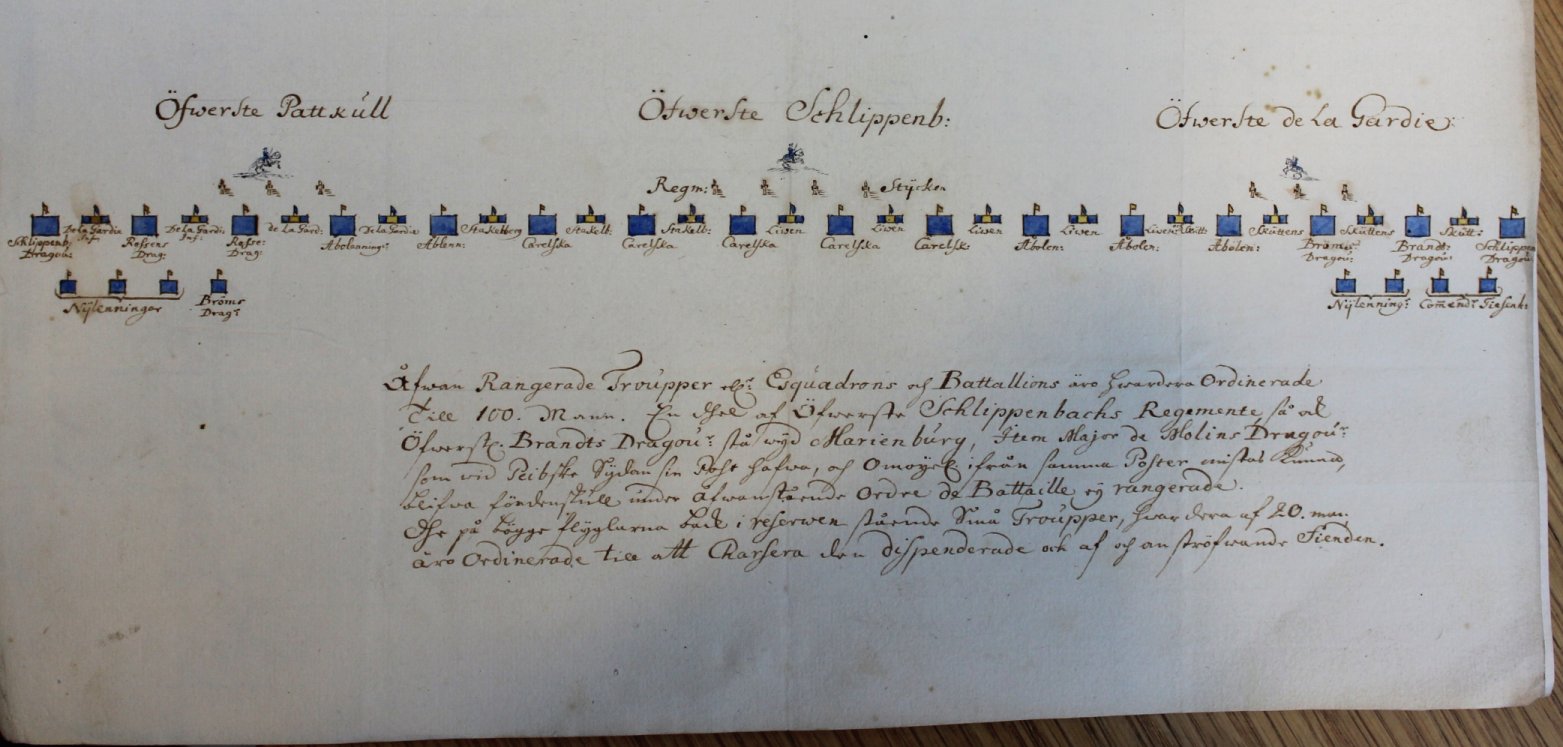Topic: Battles
For some reason Karl XII på slagfältet, vol. 2 does not give a detailed list of Swedish losses in the battle of Narva 1700. At least some of shortcomings can be remedied by a document dated Narva 28 November 1700 and signed by Major General Maydell. The units covered are the participating detachments from the Finnish infantry regiments:
Col. Funcken's (Åbo): 1 captain wounded, 1 NCO missing (presumed dead), 1 NCO wounded, 1 corporal missing (presumed dead), 1 corporal wounded, 3 soldiers wounded and 13 killed.
Col. Creutz (Björneborg): 1 captain wounded, 2 NCOs wounded, 5 soldiers wounded and 50 killed.
Major General Maydell's (Tavastehus): 1 captain dead, 1 lieutenant dead, 1 lieutenant wounded, 3 NCOs wounded, 1 corporal dead, 14 soldiers wounded and 7 killed.
Col. Mellin's (Viborg): 1 captain wounded, 1 corporal dead, 14 soldiers wounded and 7 killed.
Col. Cronman's (Savolax): 1 captain dead, 1 lieutenant dead, 27 soldiers killed.
Col. Budberg's (Nyland): 8 soldiers wounded.
Source: Krigsarkivet, Krigshandlingar. Stora nordiska kriget, Avd. 3, vol. 10



